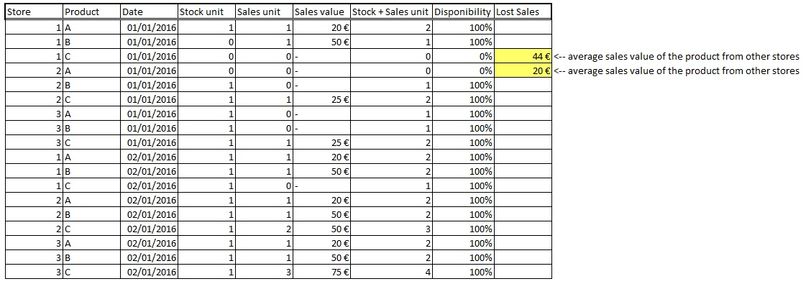- Power BI forums
- Updates
- News & Announcements
- Get Help with Power BI
- Desktop
- Service
- Report Server
- Power Query
- Mobile Apps
- Developer
- DAX Commands and Tips
- Custom Visuals Development Discussion
- Health and Life Sciences
- Power BI Spanish forums
- Translated Spanish Desktop
- Power Platform Integration - Better Together!
- Power Platform Integrations (Read-only)
- Power Platform and Dynamics 365 Integrations (Read-only)
- Training and Consulting
- Instructor Led Training
- Dashboard in a Day for Women, by Women
- Galleries
- Community Connections & How-To Videos
- COVID-19 Data Stories Gallery
- Themes Gallery
- Data Stories Gallery
- R Script Showcase
- Webinars and Video Gallery
- Quick Measures Gallery
- 2021 MSBizAppsSummit Gallery
- 2020 MSBizAppsSummit Gallery
- 2019 MSBizAppsSummit Gallery
- Events
- Ideas
- Custom Visuals Ideas
- Issues
- Issues
- Events
- Upcoming Events
- Community Blog
- Power BI Community Blog
- Custom Visuals Community Blog
- Community Support
- Community Accounts & Registration
- Using the Community
- Community Feedback
Register now to learn Fabric in free live sessions led by the best Microsoft experts. From Apr 16 to May 9, in English and Spanish.
- Power BI forums
- Forums
- Get Help with Power BI
- Desktop
- Cost of Oppotunity
- Subscribe to RSS Feed
- Mark Topic as New
- Mark Topic as Read
- Float this Topic for Current User
- Bookmark
- Subscribe
- Printer Friendly Page
- Mark as New
- Bookmark
- Subscribe
- Mute
- Subscribe to RSS Feed
- Permalink
- Report Inappropriate Content
Cost of Oppotunity
Hello to all,
I have come to my personal limit with DAX...
I am trying get the cost of opporinity from each store. By cost of oppotunity I meen the stores that dont have disponibility of one product, look for the average sales of this product from the other stores and sum this as "Lost Sales".
It sounds simple but I dont have any clue how to formulate this in DAX...
Example:
I hope you can help me ![]()
Solved! Go to Solution.
- Mark as New
- Bookmark
- Subscribe
- Mute
- Subscribe to RSS Feed
- Permalink
- Report Inappropriate Content
Hi @Anonymous,
In your scenario, you can create a measure like below:
Lost Sales = IF(MIN('storetable'[Disponibility])=0,
CALCULATE(SUM(storetable[Sales value]),ALLSELECTED( storetable ), VALUES( storetable[Product] ))/CALCULATE(COUNT(storetable[Sales value]),ALLSELECTED( storetable ), VALUES( storetable[Product] )),BLANK())
Then you can place "Store" field in a slicer visual, check different values to filter table data.
Best Regards,
Qiuyun Yu
If this post helps, then please consider Accept it as the solution to help the other members find it more quickly.
- Mark as New
- Bookmark
- Subscribe
- Mute
- Subscribe to RSS Feed
- Permalink
- Report Inappropriate Content
Hi @Anonymous,
In your scenario, you can create a measure like below:
Lost Sales = IF(MIN('storetable'[Disponibility])=0,
CALCULATE(SUM(storetable[Sales value]),ALLSELECTED( storetable ), VALUES( storetable[Product] ))/CALCULATE(COUNT(storetable[Sales value]),ALLSELECTED( storetable ), VALUES( storetable[Product] )),BLANK())
Then you can place "Store" field in a slicer visual, check different values to filter table data.
Best Regards,
Qiuyun Yu
If this post helps, then please consider Accept it as the solution to help the other members find it more quickly.
- Mark as New
- Bookmark
- Subscribe
- Mute
- Subscribe to RSS Feed
- Permalink
- Report Inappropriate Content
I think you are a trying to do the something like the following:
measure=if(hasonevalue(storetable'[store]), divide(calculate(sum('table'[salesColumn]), filter(all('storetable'), 'storetable'[store] <> values('storetable'[store]))), calculate(sum('table'[ordercount]), filter(all('storetable'), 'storetable'[store] <> values('storetable'[store]) ))), blank())
you could also use a variable to store the filtered table to make the code a bit cleaner, but that would be a little more complicated.
Hope that helps
I hope this helps,
Richard
Did I answer your question? Mark my post as a solution! Kudos Appreciated!
Proud to be a Super User!
- Mark as New
- Bookmark
- Subscribe
- Mute
- Subscribe to RSS Feed
- Permalink
- Report Inappropriate Content
Hi richbenmintz,
Thank you very much for the fast repley.
It looks like its working but only if I select a single store with a slicer, otherwise I cant view the measure...
Is there a way to view it for all the stores at the same time?
- Mark as New
- Bookmark
- Subscribe
- Mute
- Subscribe to RSS Feed
- Permalink
- Report Inappropriate Content
correct the measure will only work if there is a single store in the filter context. if you add store to rows or columns then you will be able to use multiple stores in your slicer
I hope this helps,
Richard
Did I answer your question? Mark my post as a solution! Kudos Appreciated!
Proud to be a Super User!
Helpful resources

Microsoft Fabric Learn Together
Covering the world! 9:00-10:30 AM Sydney, 4:00-5:30 PM CET (Paris/Berlin), 7:00-8:30 PM Mexico City

Power BI Monthly Update - April 2024
Check out the April 2024 Power BI update to learn about new features.

| User | Count |
|---|---|
| 107 | |
| 94 | |
| 76 | |
| 62 | |
| 50 |
| User | Count |
|---|---|
| 147 | |
| 106 | |
| 104 | |
| 87 | |
| 61 |



